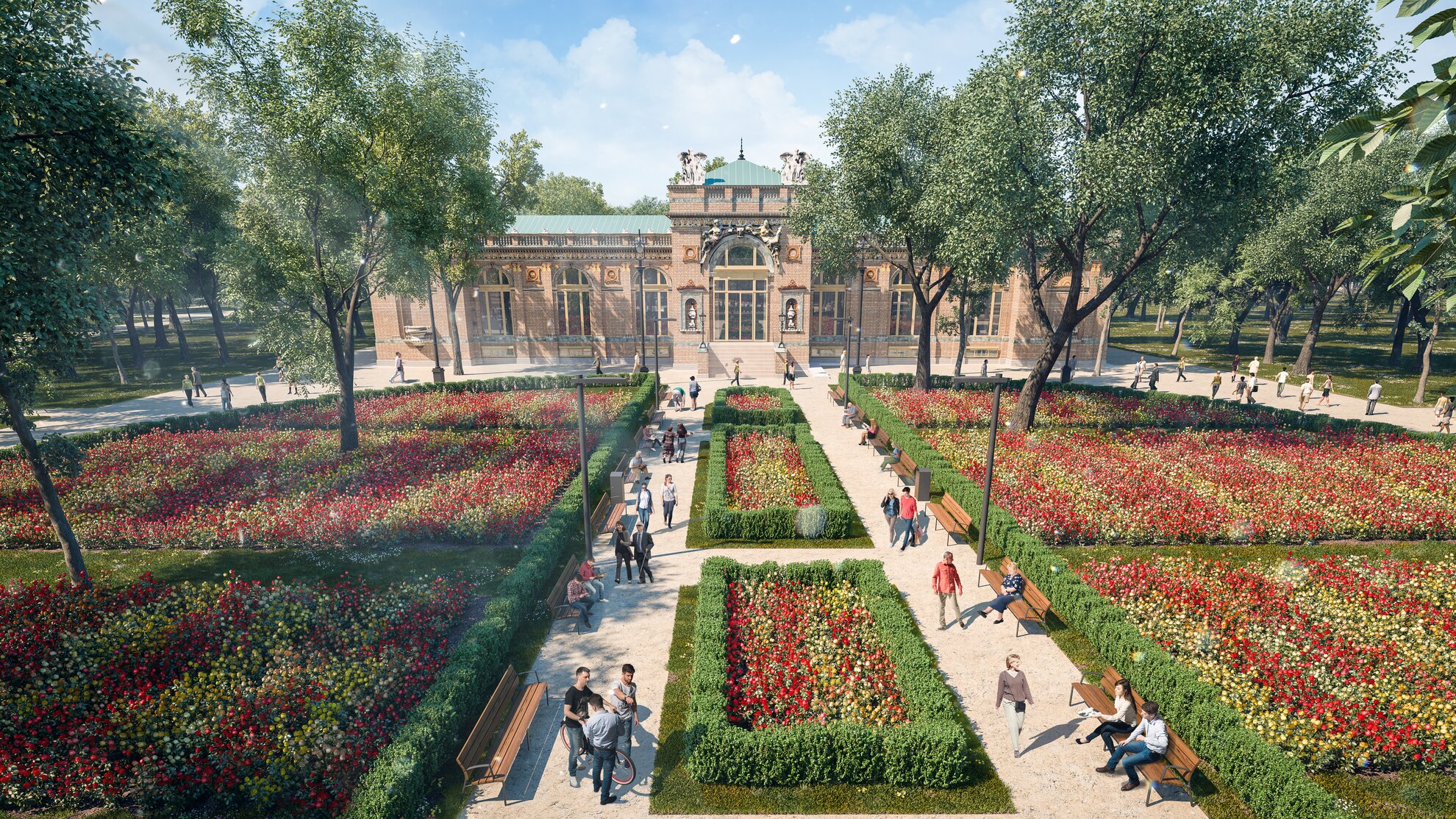The most popular green space of Pest, Városliget (“City Park” in English), looks back on 200 years of history. The city’s second-biggest public parkland was the main venue of Hungary’s Millennium Celebrations, and is used by families visiting the zoo, children learning to ice skate, and tourists soaking in the thermal waters of Széchenyi Bath. The fate of City Park is an issue close to the heart of many, and as many probably already know, a renovation initiative was launched in 2011 under the name Liget Budapest Project to improve the public park and its recently neglected green areas, alongside some of the buildings that stand there.
The basic objective of the project is to rehabilitate the park and its institutions in a way that doesn’t violate the traditions of City Park, and to establish a dynamic cultural and recreational center that is accessible for everyone. For this purpose, historical buildings are being refurbished, while a museum quarter, catering facilities, and playgrounds are being established.

During Easter weekend, visitors to City Park were already presented with the first results of the renovation works: the old, dilapidated kiosks that lined Állatkerti körút were replaced by elegant pavilions. The impressive restorations were made according to the Oriental-style pavilion plans that were created in 1860 by the architect of Pesti Vigadó, Frigyes Feszl, but the original 19th-century plans were completed with modern interior-design elements. One of the new kiosks was turned into a café and confectionery, another one now serves as an art shop for gifts, while the third stand proffers a selection of merchandise for recreational activities. Moreover, a spacious terrace is now set up between the buildings to provide an area for community activities.
While the works are taking place, we can follow the plans and updates on the official website of the project. Below are some examples, but there are many more details to the project:
- The Romanesque Hall of the Museum of Fine Arts is being renewed, while the building will be complete with new exhibition halls and public spaces, alongside a modern storage area. When this comprehensive restoration project is completed, the museum will be able to display key pieces of Hungarian masters whose artworks could only be stored elsewhere during the past four decades. The Museum of Fine Arts reopens in 2018.
- The Hungarian Museum of Science, Technology and Transport is receiving a complete reconstruction, and as the highlight of the project, the iconic dome of the original building will be restored to function as a lookout point.
- After standing abandoned for years, the beautiful Olof Palme House is being renovated to become a cultural and hospitality scene, while in front of the building a rose garden will be established with 5,000 roses and evergreen plants, while the Garden of the Blind will also get a makeover.

- To create an accessible and car-free City Park, the Kós Károly Promenade will become an actual walking path with the elimination of car traffic, and the large parking lot by Dózsa György Street is being replaced with underground garages.
- A new rubberized running track is being established that will be fully illuminated along its two-kilometer-long path.
- The southern and southeastern area of the park will benefit amateur athletes in the future with sports fields for ball games and outdoor gym equipment.

- Páva-sziget (“Peacock Island” in English) is being restored, allowing boats to go around the entire island on City Park’s lake, and with the establishment of playgrounds and an event space it may become a truly family-friendly zone.
- The existing playgrounds of City Park are being renovated, as well: with special tools and wheelchair-accessible solutions, they will become available and intriguing for all of its visitors.

Liget Budapest
Website
FacebookYoutube




